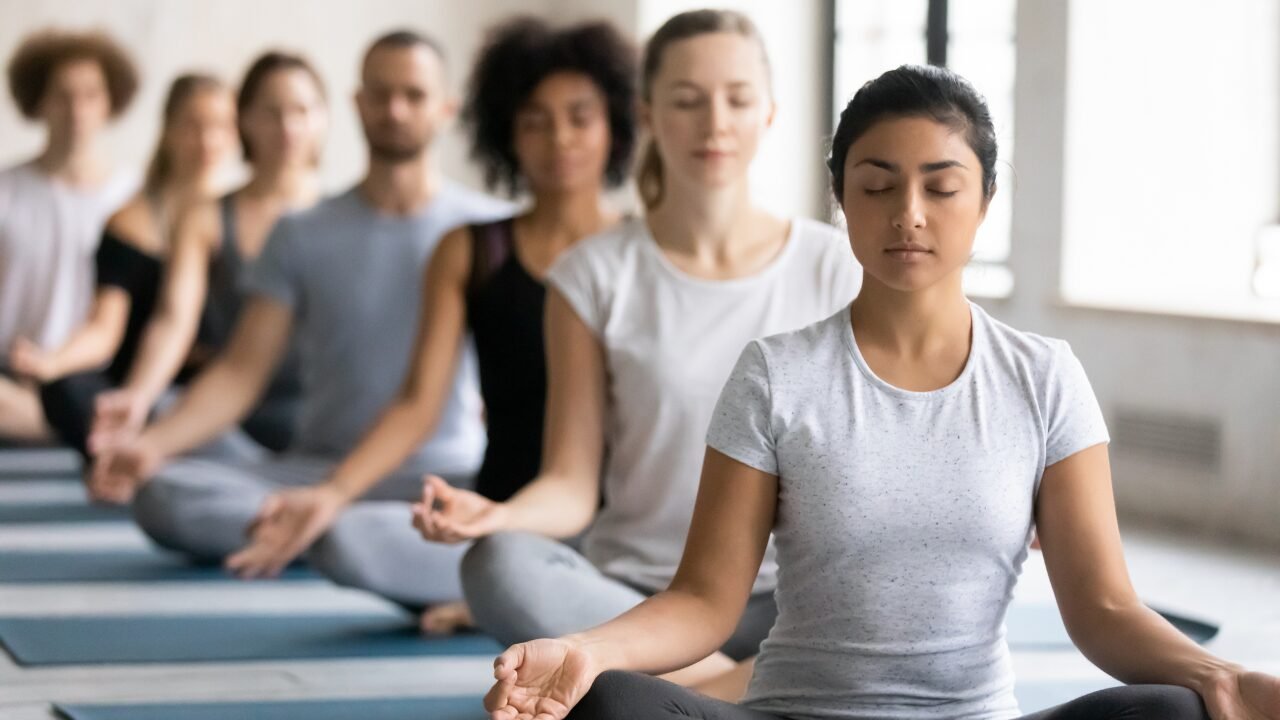
Meditation vs. Yoga: Inner Peace or Physical Bliss? Discover Your Wellness Journey
Yoga and meditation are two practices often mentioned in the same breath, but what exactly is the difference? Can they be done together, and which one is right for you? Let’s explore the differences and connections between yoga and meditation in this article.
Yoga, originating in India thousands of years ago, is a holistic discipline that combines physical postures (asanas), breathing exercises (pranayama), and chanting. It’s like a workout for both body and mind. On the other hand, meditation focuses on calming the mind and finding inner peace through techniques like mindfulness or visualization. So, while yoga is more active and involves movement, meditation is about stillness and mental focus.
The practice that combines yoga with meditation is often called yoga nidra, which translates to “yogic sleep.” It’s a deeply relaxing guided meditation that helps you become more aware and connected to your own body.
Here’s a breakdown of the key differences:
- Purpose: Meditation focuses on calming the mind, reducing stress, and promoting inner peace, while yoga aims to improve physical health, flexibility, and mental well-being through movement and breath awareness.
- Focus: Yoga uses breathwork and movement to bring awareness to the present moment. Meditation trains the mind to focus on a single point, such as the breath or a mantra (a repeated word or phrase).
- Duration: Yoga sessions can vary in length, ranging from a few minutes to over an hour, depending on the style and intensity, while meditation sessions can also vary but are typically shorter in duration, often starting with just a few minutes and gradually increasing over time.
- Physicality: Yoga incorporates physical postures that improve flexibility, strength, and balance. Meditation is primarily a mental practice, done in a seated position.
- Techniques: In meditation, techniques may include mindfulness, concentration, visualization, or guided imagery to cultivate awareness and mental clarity. In yoga, various techniques such as asanas (postures), pranayama (breath control), and relaxation methods are used to achieve physical and mental benefits.
- Intensity: Yoga can range from gentle to very physically demanding. Meditation is generally a low-impact practice.
- Goal: The ultimate goal of yoga is often seen as achieving union between the body, mind, and spirit, sometimes referred to as “yoga union” or “yoga harmony.” The goal of meditation is often to achieve a state of inner peace, clarity, and self-awareness.
Understanding the Relation Between Yoga and Meditation
Though distinct, yoga and meditation are deeply intertwined. Yoga postures can prepare the body for meditation by releasing tension and improving focus. The relation between yoga and meditation is like a dance between two partners, each complementing and enhancing the other. Yoga provides the physical groundwork, with poses and breathing exercises that prepare the body and mind. Meditation then steps in to deepen this connection, guiding us into a state of inner peace and awareness. Together, they create a harmonious path towards overall well-being, helping us to find balance and tranquility in our lives.
How Yoga and Meditation Can Enhance Your Wellbeing
Both yoga and meditation have been around for centuries, but recent scientific research has confirmed what many practitioners have always known: these practices offer a wealth of benefits for both the mind and body. Here’s a closer look at how yoga and meditation can improve your overall well-being:
- Reduced Stress and Anxiety: Yoga and meditation are powerful tools for stress and anxiety management. Yoga’s combination of physical postures, controlled breathing, and focused attention helps calm the nervous system and reduce stress hormones. Meditation techniques like mindfulness train the mind to be present in the moment and let go of worries, promoting feelings of peace and relaxation.
- Improved Sleep Quality: Practicing yoga and meditation can improve sleep by helping to relax the body and quiet the mind. By reducing stress and promoting relaxation, both yoga and meditation can help reduce insomnia, and experience deeper, more restorative sleep. Additionally, yoga’s gentle stretching can improve circulation and ease muscle tension, further contributing to better sleep quality.
- Increased Flexibility and Strength: Yoga postures, or asanas, target various muscle groups, improving flexibility and range of motion. Over time, regular practice can lead to improved flexibility and strength in various parts of the body. Even gentle yoga styles can significantly enhance flexibility, especially for those who lead relatively sedentary lifestyles. Moreover, meditation helps make your mind stronger by improving resilience and clarity, which builds mental strength and toughness as you continue practicing over time.
- Enhanced Focus and Concentration: Both yoga and meditation train the mind to focus and concentrate. By practicing mindfulness and paying attention to the present moment, individuals can enhance their ability to focus on tasks and activities in all aspects of your life, from work performance to daily activities.
- Greater Self-Awareness: Yoga and meditation encourage introspection and self-reflection, leading to greater self-awareness. Through these practices, individuals can develop a deeper understanding of themselves, their emotions, and their behaviors, ultimately leading to personal growth and self-improvement
Is meditation a part of yoga?
Picture yoga as a beautiful garden, with different plants and flowers blooming. Meditation is like the soil that nourishes the garden, providing the foundation for growth and vitality. Just as healthy soil is essential for a thriving garden, meditation is integral to yoga, helping us find inner peace and strength. So, yes, meditation is definitely a part of yoga, enriching our practice and helping us blossom into our best selves.
Finding Your Flow: Should You Start with Yoga, Meditation, or Both?
The order of your yoga and meditation practice depends on your personal goals and what feels best for your body and mind.
Some people prefer to start with yoga to loosen up their body and get into a relaxed state before meditating. Others find that meditation before yoga helps them clear their mind and focus better during their practice. Some even like to do both!
Ultimately, experiment and see what works best for you. You might even discover you enjoy the benefits of both, starting with meditation for focus and ending with yoga for relaxation.



